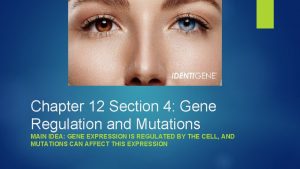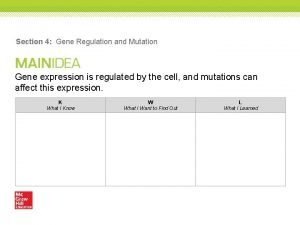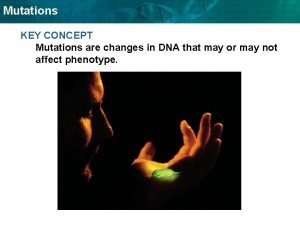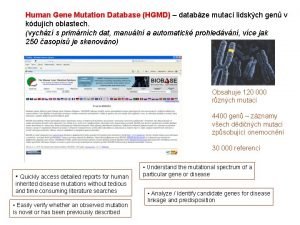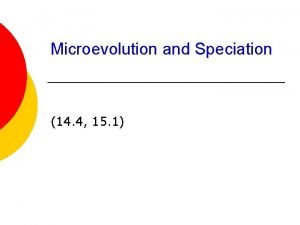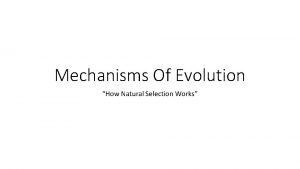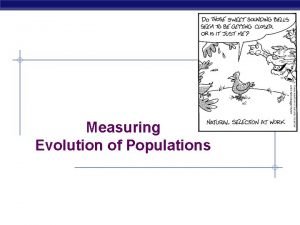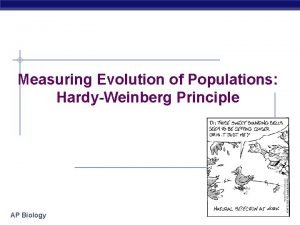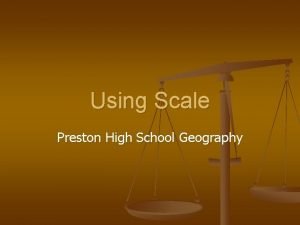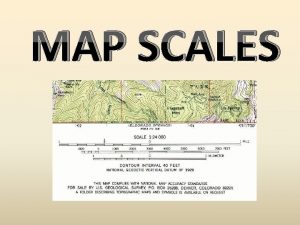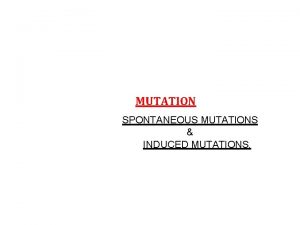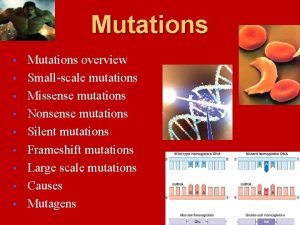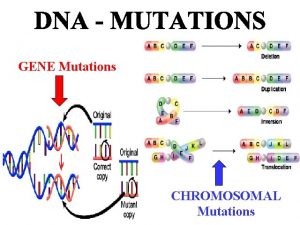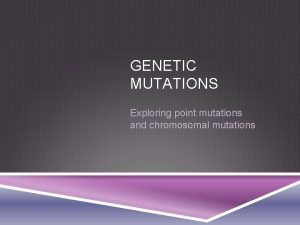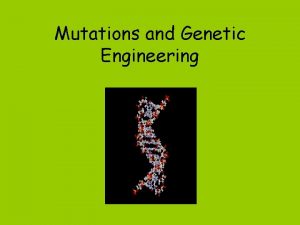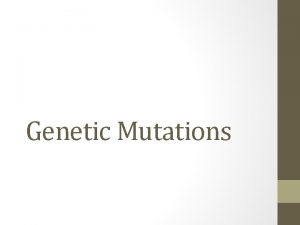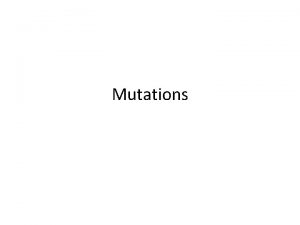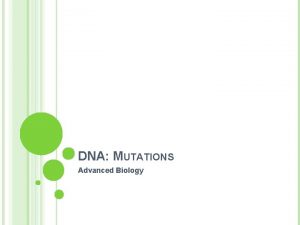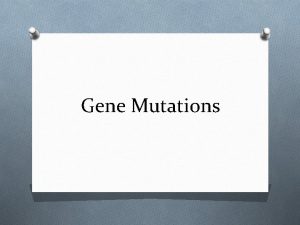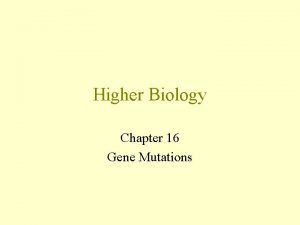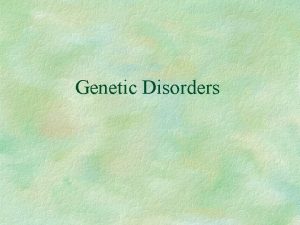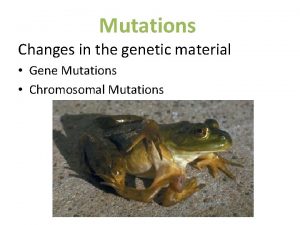Human Genetic Mutations Gene Mutations Small scale one















- Slides: 15

Human Genetic Mutations

Gene Mutations • Small scale: one gene is affected • Any change to the DNA sequence of a gene: Nucleotides/Bases may be added, missing, or changed

Gene Mutations: 2 Types Point Mutation Frameshift Mutation

Point Mutation • One base (A, T, C, or G) is substituted for another • 3 Possible Consequences: – nonsense mutations: code for a stop, which can produce the wrong protein – missense mutations: code for a different amino acid – silent mutations: code for the same amino acid. • Most common!!

Frameshift Mutation • One or more bases (A, T, C, or G) are added or deleted • Causes: Cystic Fibrosis • Caused by: – Insertion: adding a base – Deletion: removing a base

Causes of Mutations • spontaneous • occur during DNA replication • Caused by MUTAGENS • physical, ex: radiation from UV rays, X-rays or extreme heat • or chemical (molecules that misplace base pairs or disrupt the helical shape of DNA).

Gene Mutations • KEY IDEA: A mutated gene will make a mutated protein • Mutant proteins are trouble! – They do not go where they are supposed to go – They do not do what they are supposed to do

Example: Sickle Cell Anemia Normal Red Blood Cell Sickle Red Blood Cell • Red blood cells shaped like a disc • Hemoglobin (protien) carries oxygen to all parts of the body • Red blood cells form an abnormal crescent shape • Hemoglobin (protein) is abnormally shaped • don't move easily through your blood vessels • form clumps and get stuck in the blood vessels


Example: Cystic Fibrosis (CF) • What is it? – Autosomal, recessive disorder • Symptoms – Thick mucus in the lungs and digestive track – Constant lung infections and impaired digestion

Cystic Fibrosis (CF) • Who gets it? – Anyone – Most common in Caucasians • Prevalence – 1 in ~3, 000 Americans has CF – 1 in 23 white Americans carries the mutant allele!

Cause of Cystic Fibrosis (CF) • The “CFTR” gene is mutated – 3 base pairs are deleted • Mutant protein is missing an amino acid and cannot fold correctly vs

Normal CFTR protein: Ion channel in cell membrane

KEY POINT #2 Mutation of a gene = Mutant protein Dysfunctional proteins cause the symptoms of the disorder

Review • What are the two major types of genetic mutations? • How are chromosomal aberrations and gene mutations different? • What are the 4 types of chromosomal aberrations? • What are some types of gene mutations?
 Genetic effects on gene expression across human tissues
Genetic effects on gene expression across human tissues Section 4 gene regulation and mutation
Section 4 gene regulation and mutation Section 4 gene regulation and mutations
Section 4 gene regulation and mutations Gene mutations
Gene mutations Databze
Databze Founder effect genetic drift
Founder effect genetic drift Genetic programming vs genetic algorithm
Genetic programming vs genetic algorithm Genetic programming vs genetic algorithm
Genetic programming vs genetic algorithm What is the difference between genetic drift and gene flow
What is the difference between genetic drift and gene flow Genetic drift vs genetic flow
Genetic drift vs genetic flow Genetic drift vs gene flow vs natural selection
Genetic drift vs gene flow vs natural selection Mechanism of evolution
Mechanism of evolution What is gene flow and genetic drift
What is gene flow and genetic drift Genetic drift vs gene flow
Genetic drift vs gene flow What is a line scale
What is a line scale The definition of map scale
The definition of map scale

